Guest Writer for Wake Up World
If you’ve ever wondered why you’re always attracted to “the wrong person,” this exploration is for you.
First, what even is attraction?
Is it pheromonal? Aesthetic? Does it grow from familiarity? Or spring forth when we feel another’s desire for us?
Here, we will be focusing on erotic magnetism—an aspect of a type of relationship variously called an Imago match, a “Twin Flame” dynamic, or a plain old toxic love affair.
[pro_ad_display_adzone id=”110028″]
Why we pick who we pick
We might like to think that we choose partners based on a personal checklist: values, attributes, and characteristics, in a meaningfully arranged hierarchy of importance. Perhaps like one of those boxes with different shaped holes, we can hold each potential partner up to our shape of choice and the one that slips through will win!
Unfortunately, this framework does not account for the quite powerful (and unconscious!) dimensions of attraction and partnering.
We learned what love is from our caregivers and because we were loved conditionally, we learned which of our behaviors resulted in connection and which resulted in withdrawal of parental affection, approval, and warmth, or worse, resulted in violence. In the crucible of these hot and cold dynamics, with neglect, actual abandonment, and emotional, verbal, and physical abuse, we made a study of our parents so that we could read and anticipate what would keep them appeased.
What we largely did not experience is the nurturing of our intuitive compass. We experienced instead shame and self-suppression. Instead of the unfoldment of our unique, boundaried personhood—our emergent self-ness—we typically experienced wholesale adoption of inter-generational programs, beliefs, and ideas without any room to question them. And this is why we find ourselves, as a human collective, struggling with the consequences of an unquestioning, obedient, compliant, fear-based populace relating destructively to parentified Mommy Medicine and Daddy Government.
Because of such conditional access to our caregivers’ heart energy, we aggregated an arsenal of behaviors leveraged to gain as much love (and avoid as much rejection) as possible. This, my friends, is better known as your personality.
And personality works. It keeps us from rejection, abandonment, or betrayal through reflexes that keep us in the right and someone else in the wrong. Our personality keeps us dancing, anticipating, and guessing what our loved one wants and needs so that we can fulfill, appease, and manage expectations to keep the peace. Yet, this outward-focused survival strategy threatens our connection to our feelings, intuition, and even our own minds.
We were, and thus are, programmed.
And if love felt like chasing, if it felt like we got a crumb if we performed well, if it felt like negative attention was better than none, no wonder it has become our signature way to partner. This power dynamic stems from the sense that someone more powerful dictates our access to feelings of safety, well-being, and warmth—what we know as love. Worse, as relational, love-seeking beings, we will select for this dynamic of emotional unavailability and insecurity and even desire to partner in it!
Harville and Helen Hendrix, founders of Imago Therapy, posit that relationships and marriages result from needs rather than love. That we have a subconscious image of familial love, which guides our attraction to a partner. This partner will have the same injurious traits as one or both of our parents. This pairing will then be an opportunity to heal and transform that childhood pain…and to resolve this pattern of abandonment, rejection, or betrayal. They further theorize that romantic conflict invites these hurts to be felt, and ultimately healed, chiefly through our own ability to learn to now love ourselves.
Because these partners will have complementary wounds, they will be literally unable to give us what we long for, and we, in turn, will be unable to give them what they long for. And when we attempt to meet our needs without either overtly declaring them or assessing the potential for them to be met by a given partner, we default to old strategies of securing needs indirectly. Through manipulation.
For example, if you feel jealousy but don’t think your partner will be able to hold, honor, and respond to that feeling in you, you will likely criticize or otherwise malign a woman you imagine he would be attracted to or even fabricate reasons for the two of you to collude against her. You might insist that you know better than your partner what he needs to do to succeed, heal, or progress in life attempting to control and fix him so that he might one day show you the love that you want (cue the Rescuer entry-point to the Victim Triangle). Or maybe you want to feel supported, so you develop a chronic illness that will justify the attention and help that you seek. Or you might say things like, “no woman would ever put up with this!” because you don’t feel like you can say “this hurts, and it doesn’t work for me.”
Codependence, Addiction, and Functional Dysfunction
When these dynamics are functionally dysfunctional, they can often be described as codependent. In codependency, we are disconnected from an awareness of our own needs. So, they go largely unmet as we focus on the management of our partner’s expectations, driven by a deep fear of abandonment and rejection. You might find you are prone to curating yourself so that you strategically present what you imagine will result in the most attention from your partner. It’s like eating ice cream when you’re thirsty. It can feel good for a time, but ultimately this approach leaves us wanting. In codependency, you feel your life force draining, and you stay anyway, because “you love him.”
Codependence stems from a conditioned deficiency of self-love and results in poor boundaries, poor self-awareness, and a compromised connection to our needs and how to represent them with maturity. The most identifiable marker of codependence is resentment—the blame of others for one’s own self-betrayal. We try to mind read, to assess stability, and assume we will earn points for all of our “loving behavior.” We please, often in violation of our own desires. This works until it doesn’t. Then we play the martyr card that says, “After all I’ve done for you…you treat me like this?!” It’s always only about being right about being wronged (aka your Victim Story).
In codependent dynamics we are unable to actually see, accept, and allow the person to first be who they are, and then choose whether or not we would still choose the relationship. Instead, we hold this partner up against an overlay. We manipulate, judge, and expect them to match this overlay. We resent when they do not match it. This is being in love with potential, a fantasy we imagine is possible, while rejecting who they actually have shown us they are.
This is not love.
“When someone shows you who they are, believe them the first time.” – Maya Angelou
In this model of “love,” everything is on a ledger. It’s a transaction. It’s a kind of love that keeps score and is ultimately between energetic opponents that are negotiating their way through a seemingly endless minefield of childhood hurt.
The pain of codependent relational habits and patterns can also create the conditions for addictions to soothe this pain. Described by some therapists as “love addiction,” Dr. Howard C. Samuels in his Love Addiction Workbook summarizes the phenomenon as follows:
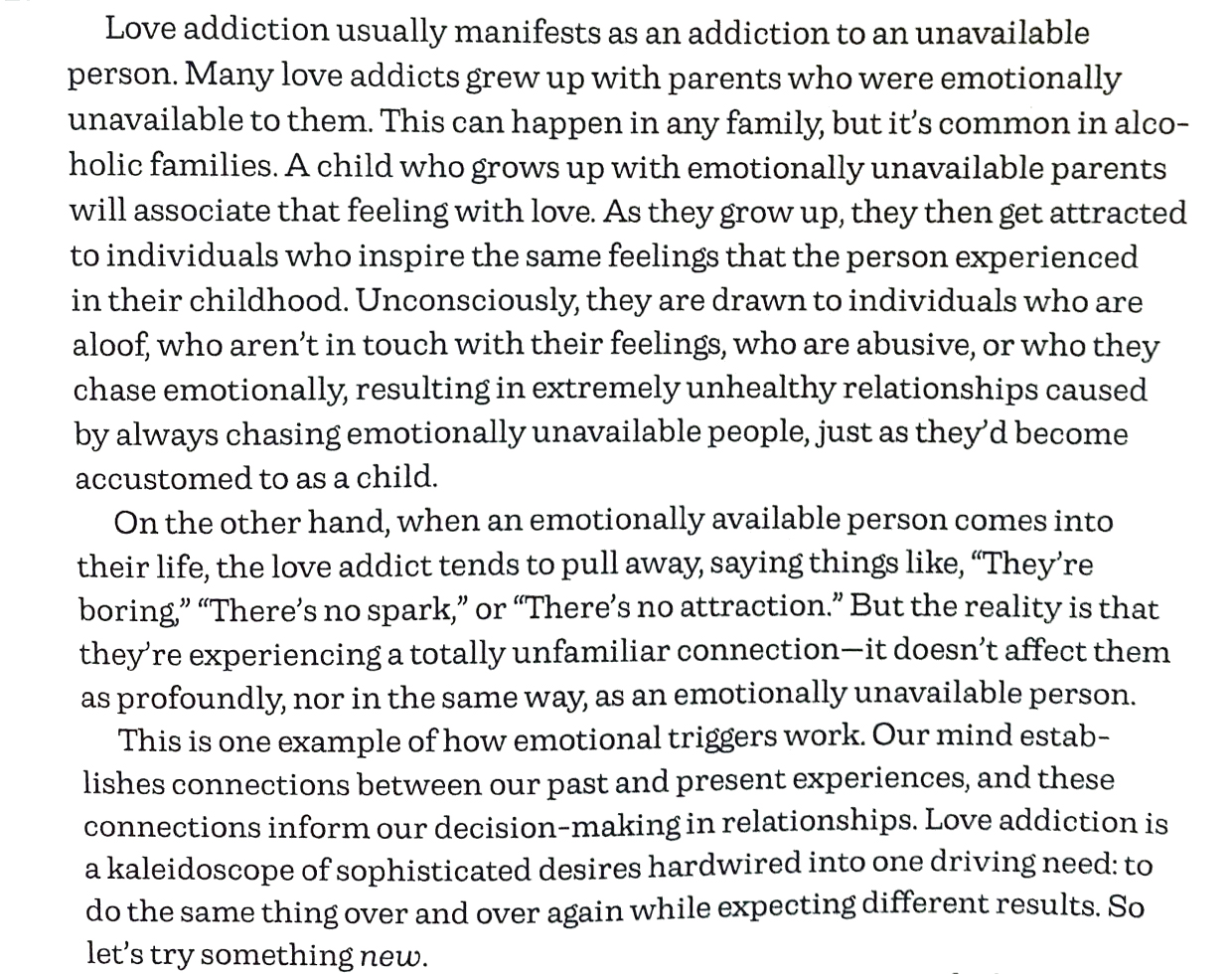
In Facing Love Addiction, Pia Mellody describes the common pairing of Love Addicts with Love Avoidants describing Addicts as:
- Assigning a disproportionate amount of time, attention, and “value above themselves” to the person to whom they are addicted, and this focus often has an obsessive quality about it.
- Have unrealistic expectations for positive regard from the other person in the relationship.
- Neglect to care for or value themselves while they are in the relationship.
Avoidants, on the other hand:
- Evade intensity within the relationship by creating intensity in activities (usually addictions) outside the relationship.
- Avoid being known in the relationship in order to protect themselves from engulfment and control by the other person.
- Avoid intimate contact with their partners, using a variety of processes called “distancing techniques.”
Love addicts become neurochemically, behaviorally, and psychologically addicted and conditioned around cycles of positive and negative intensity, experiencing this as “passion.” They are seeking the knight (or maiden) in shining armor who will finally resolve the pain of their original childhood abandonment, betrayal, or rejection experience but they find the frog or the beast that needs to be somehow magically loved into the prince of king. For a woman, she will seek a man who will love her unconditionally and take care of her every need and for a man, he will seek a woman who is a super-nurturer. In essence, the fantasy father or fantasy mother. Although Addicts are typically the female partner and Avoidants the male, each can be either and even shapeshift between them.
Because Love Addicts believe they want connection and closeness, but subconsciously actually fear intimacy, they will do something to create distance from their partner when closeness presents itself. What they actually seek is enmeshment or the childlike merger with an idealized parental figure. As the Addict seeks enmeshment and to source energy from the Avoidant, the Avoidant re-experiences the fear of engulfment from the enmeshment trauma of their own childhood, and is, in response, hypersensitive to being controlled. So they, in response, create distance.
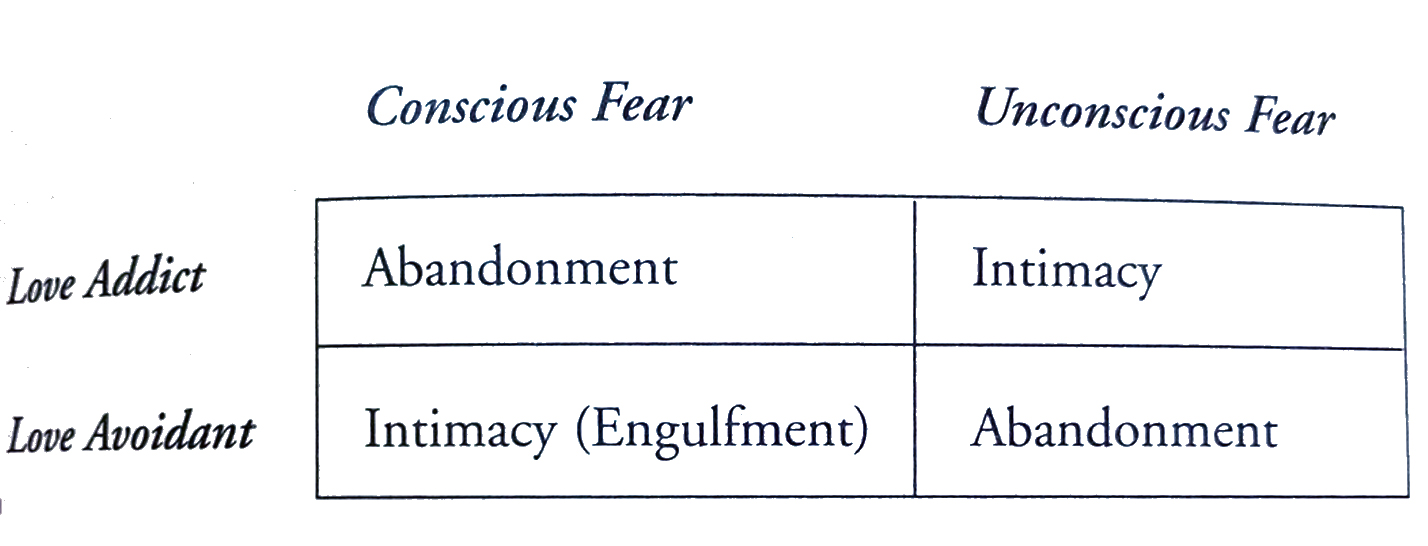
Facing Love Addiction by Pia Mellody
When it all falls apart
[pro_ad_display_adzone id=”110030″]
Over the course of the relationship, the Avoidant will put up walls of silence and anger (instead of healthy boundaries that facilitate intimacy) to distance from the Addict and minimize intensity within the relationship while seeking increasing stimulus (work, sex, substances) outside of the relationship. Next comes the rupture of idealization.
This rupture and the associated cognitive dissonance (if he loved me this would not be happening) can present an opportunity. At this fork in the road, and certainly through the Imago framework, one partner’s sensitivity can serve as a path to healing the other partner’s primary defenses.
If my household was very volatile growing up, I might long for a calm, rational partner who has the same defensive structure as I do. But in an Imago match or co-addicted dynamic, my partner has the same volatility patterns as my parents—whose patterns developed as they adapted to their own wounding—and my calm rationality might be exactly what they don’t want. This funhouse of reflected, largely impersonal, behavioral patterns ends up feeling hyper-personal. This is the death-grip of these dynamics. What begins with efforts to please each other devolves into a power struggle. Yet ultimately, this presents the opportunity of a lifetime: to deeply and truly become whole by visiting with and integrating the parts of me that I struggle with on the outside in my partner. In Imago dynamics that work long-term, the partners grow and change in ways that ultimately meet each others’ needs, and serve each person’s experience of growing self-love.
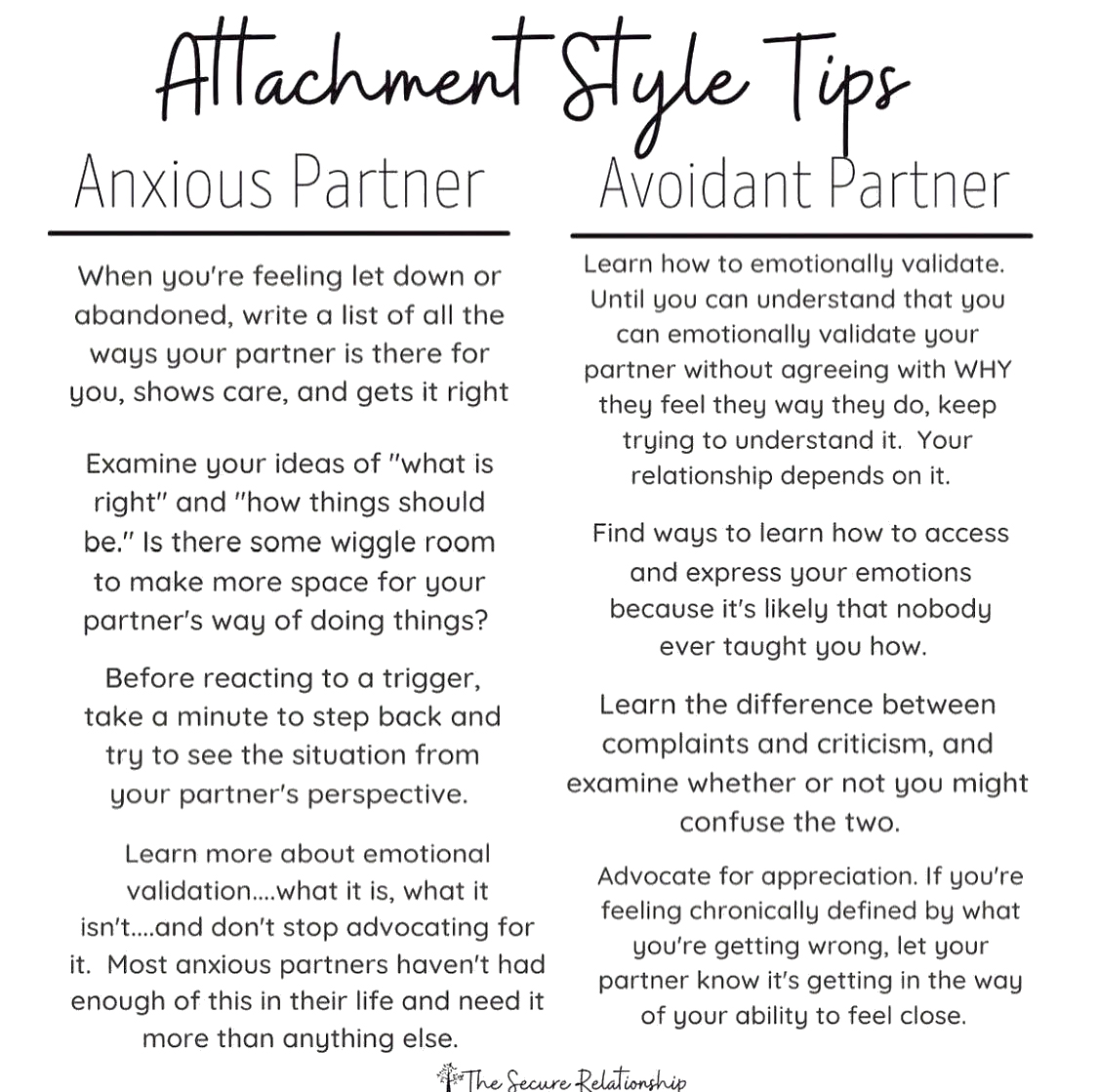
Alternatively, this rupture may represent an opportunity for one or both partners to individuate from the relationship (aka breakup), or for the projections and overlays to resolve, and to truly see the person in front of you for who they’ve likely always shown themselves to be. Who they, in fact, are.
For the Love Addict, walking away from this relationship is no small feat and Pia summarizes it, writing:
“Now the Love Addicts’ original feelings of childhood abandonment are activated along with adult feelings about the current experience of being left. As the intense emotions of pain, fear, anger, and emptiness from the original childhood abandonment combine with adult pain, fear, anger, jealousy, and emptiness about what is going on in their life now, Love Addicts may feel overwhelmed.”
This kind of breakup can feel as if it requires an inpatient rehab. For the Avoidant, however, because they were not actually in the relationship in the same way but derived a sense of worth from caretaking, serving, and rescuing, the breakup is a very different process that may flare subconscious abandonment wounds but will lead to an amplification of existing addictions (work, substances, or sourcing attention from other individuals).
Leaving these relationships, the Avoidant and Addict may still go on to repeat the cycle with a new partner. It may, however, be the opportunity of a lifetime to individuate, integrate, and heal. To begin to self-source validation, soothing, approval, care, and love. To prepare to attract partners that can offer (and receive) healthy love.
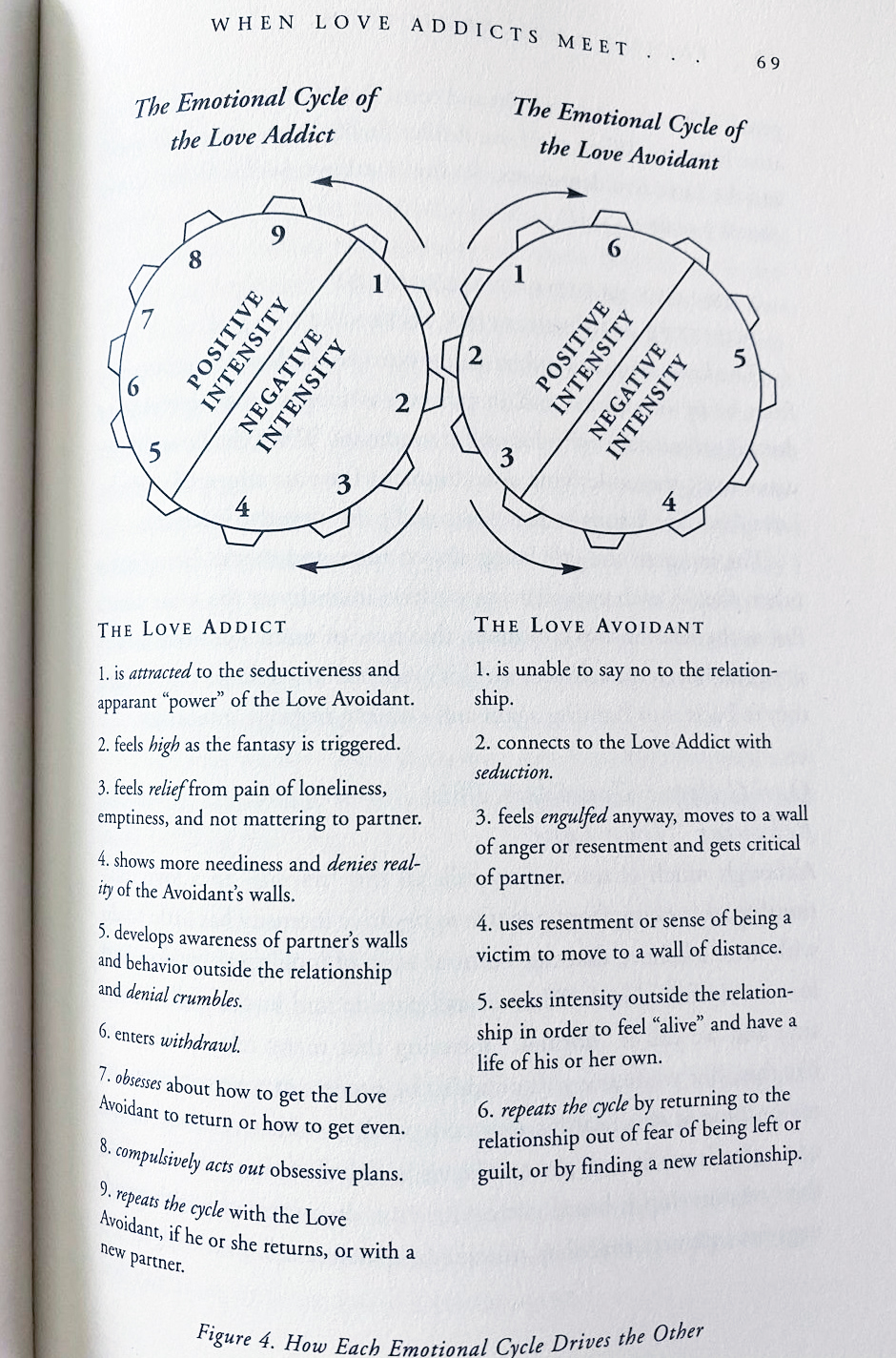
Facing Love Addiction by Pia Mellody
Healing your relationship to love
There is a paradox of being at the very center of love. In my perspective, it is the primacy of self-allegiance, self-loyalty, and self-alignment which opens the heart to pour a superfluity of compassion, approval, and warmth into another no matter what they do, don’t do, are, or aren’t.
This view recognizes that loving does not cost us anything that we do not want to give. As long as we are the keepers of our own hearts, our narratives, and our clear boundaries. If I’ve got me, and I know what I need, what works for me, and what doesn’t, then my choices are what keep me safe. Do, don’t. Stay, go. Yes, no. These are my choices. And my embodied feelings will show me exactly what I need to know about my boundaries and my associated preferences.
Are you safe with you?
LISTEN TO YOUR BODY
What does your body need for pleasure, comfort, stability? Don’t force, coerce, or otherwise turn on your body. Turn toward it. Relate to your body with a curious sensitivity. Then share with your partner what your body is showing you. Sometimes, honoring your body can be as simple as bringing sensations into a conversation. My heart is racing right now, or my stomach just felt tight when you said that.
HONOR YOUR BOUNDARIES
If you say that you’re only willing to speak if someone agrees not to yell, and then they yell, and you keep speaking, you have violated your own boundaries and can expect to have that violation mirrored to you in an ongoing way. When you are truly unwilling to tolerate something, stick to your word.
EXPRESS YOUR NEEDS
I can’t believe that it took me over 4 decades to begin to understand what my emotional needs are in relationship and to then also recognize when they cannot be met. When you feel hurt, a need has been violated. Start your list, share it, and begin to negotiate the potential for them to be met without your partner abandoning or violating their own. Doing this successfully would indicate compatibility. Otherwise, it’s time to move on.
BREAKUP BREAKTHROUGH
If you are entering the dark night of the soul that leaving a co-addicted, Imago, or Twin Flame relationship can represent, remember the big lie we always tell ourselves—that it is intolerable and that it will feel like this forever. You know that you can’t go back, you acknowledge that your needs cannot be met in the relationship, and yet you’re terrified to go forward to an imagined insufferable future.
Take it hour by hour. Maybe half an hour by half an hour. Maybe a breath at a time. Make space to allow for the mess, the confusion, the disorientation. Remember, this is the chrysalis phase. This is precisely how you move through the childhood terror of love lost into the emancipation of attracting the safe, fulfilling, stable adult love that does indeed await you.
KEEP YOUR FOCUS ON YOURSELF AND NOT YOUR EX
Journal, furiously or giddily, all the things you will NEVER DEAL WITH OR DO AGAIN because you are leaving this relationship. Celebrate that liberation! Then journal all the things that you appreciated about your partner so that they don’t live as a demon looming over you. It’s essential to get to a place of meaning, a place where you can see how your partner’s perceived mistreatment of you showed you beliefs that you actually have about yourself (I’m too controlling, too demanding, too intense) and behaviors that you are actually engaging in with yourself (self-betrayal, abandonment, rejection). Journal all the things your partner rejected about you and list ways you are working to get to know those parts of yourself, and to love them.
MOVE THE EMOTIONS
Scream, dance, punch, vent, cry. When you feel the shocks of withdrawal, sit down, put your own hand on your own heart and track the sensation inside. Tell your roiling emotions, I’m here with you. I’m not going anywhere. Then WAIT until the sensation transforms.
WORK WITH YOUR THOUGHTS
Here is an opportunity to explore the core beliefs that attract these toxic dynamics. Like, my feelings don’t matter or my reality is wrong or I’m a burden or I am difficult to love.
This is a helpful list of the ways we torture ourselves with our own thinking:
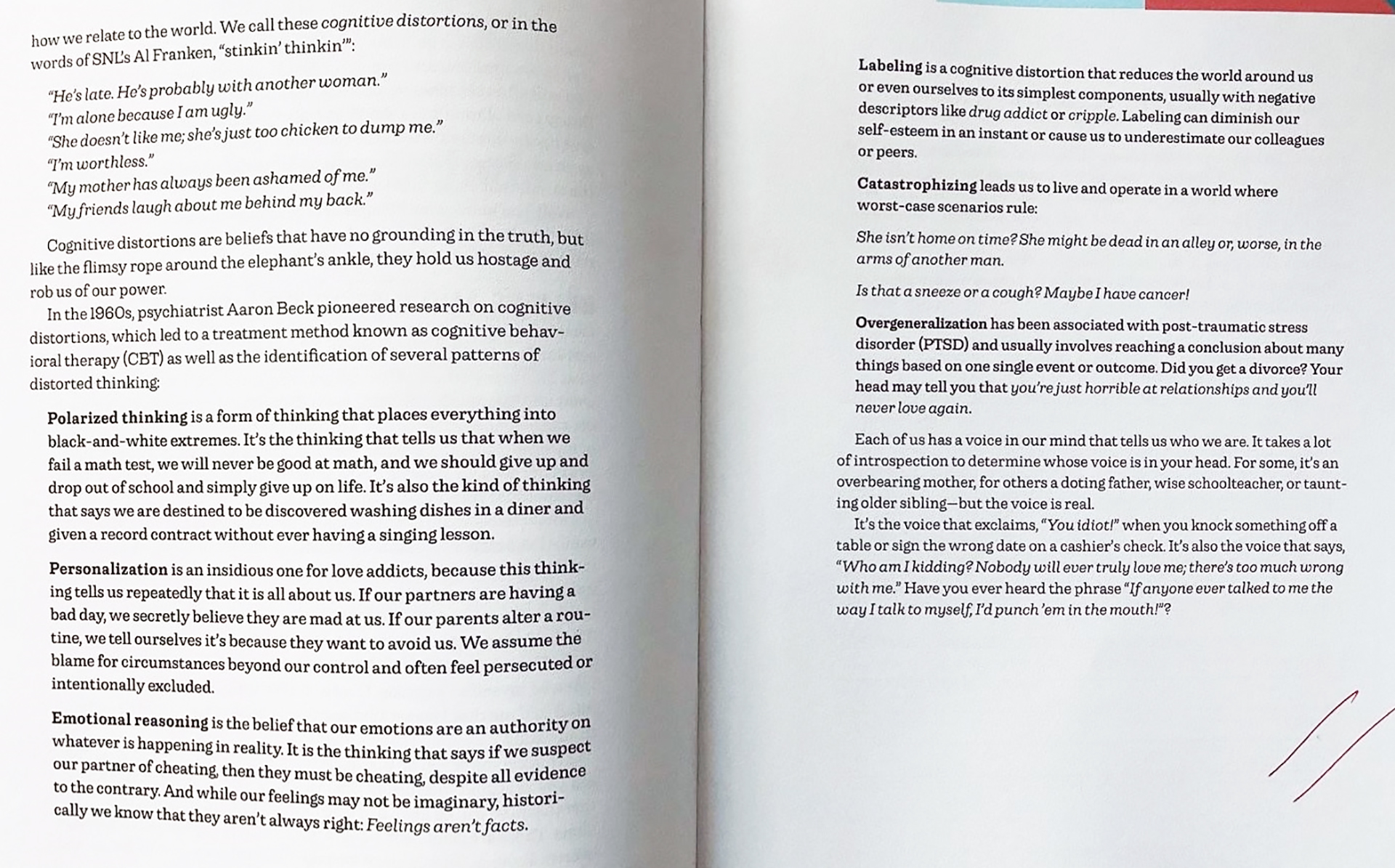
Explore the early origins of these beliefs. Explore ways that you can begin to work with empowered thoughts that also feel true, like, I’m learning how to honor my feelings, and my reality is real to me and it’s ok if no one agrees, and I’m exactly who I need to be in every moment.
I also love Byron Katie’s The Work to see how a victim story is never the full truth.
CALL IN REAL LOVE
If you’re leaving a codependent relationship, give yourself time to heal, to uplevel, to be alone, and to open to new experiences. Make room for getting to know yourself unrelated to a relationship. And when you feel ready, start to piece your new partner together in your heart and your mind’s eye.
Describe him/her in minute and various detail. What do they look like, sound like, taste like? What do they value? How do they talk to you? How do they approach conflict?
Try talking to your new partner. Like, out loud. What do you say when you’re expressing adoration and appreciation? What do you hear them say?
Write yourself a letter about the year you’re in, looking back on it. You may be focused on finding a partner, but this breakup may be an opportunity for other audacious dreaming. If you’re telling yourself about your amazing year, what has happened that is so incredible? Get to know what you actually want and let your desire piece together your reality.
STAY IN YOUR OPEN HEART
Check in with what you need, all the time. Let it matter. And give it to yourself. Reassurance? Water? Gentleness? A blanket? Approval? Signal to yourself that you matter (because you do) by honoring these needs, and you will attract someone who is also well-acquainted with self-love.
We are born as love, for love, and to love. The awakening journey from the illusion of powerlessness, victimhood, and fear, home to empowerment, safety, and the world-creating power of our thoughts, feelings, and intention is what we came here for. Know that every relationship, every heartbreak, every repeat of an old pattern is here because we need it to be exactly this way. Let us embrace what is. When we are ready for the expansion that is our birthright, we will move with courage through the lies our sweet minds tell us (just trying to keep us safe!), through the fear that clenches our hearts, and we will quickly taste the liberation, the inner ok-ness, and even the wonder at the unexpected delight of receiving exactly what we’ve always wanted when and where we may least expect it.
We’ve got this.
Originally published at kellybroganmd.com and reproduced here with permission.
Recommended articles by Kelly Brogan, M.D.
- Adverse Effects of Antipsychotic Drugs in Children
- Your Microbiome on Drugs
- Oops! The Brain DOES Have An Immune System
- Is Your Prescription Drug Causing Your Depression?
- Contraception Depression: Can the Pill Affect Your Mood?
- A Time for Rain: Teaching Our Children About Sadness
- Psychobiotics: Bacteria for Your Brain?
- Vitamin B12 Deficiency: A Trigger for Depression and Anxiety?
- The Violence-Inducing Effects of Psychiatric Medication
- Fear Is The Sickness
About the author:
Kelly Brogan, M.D. is a holistic women’s health psychiatrist, author of the NY Times Bestselling book, A Mind of Your Own, the children’s book A Time For Rain, and co-editor of the landmark textbook, Integrative Therapies for Depression. She completed her psychiatric training and fellowship at NYU Medical Center after graduating from Cornell University Medical College, and has a B.S. from M.I.T. in Systems Neuroscience. She is board certified in psychiatry, psychosomatic medicine, and integrative holistic medicine, and is specialized in a root-cause resolution approach to psychiatric syndromes and symptoms. She is on the board of GreenMedInfo, Price-Pottenger Nutrition Foundation, Functional Medicine University, Pathways to Family Wellness, Mindd Foundation, SXSW Wellness, Chickasaw Nation Wellness, and the peer-reviewed, indexed journal Alternative Therapies in Health and Medicine. She is Medical Director for Fearless Parent and a founding member of Health Freedom Action. She is a certified KRI Kundalini Yoga teacher and a mother of two. For more articles, sign up for her newsletter at kellybroganmd.com.
[pro_ad_display_adzone id=”110027″]








